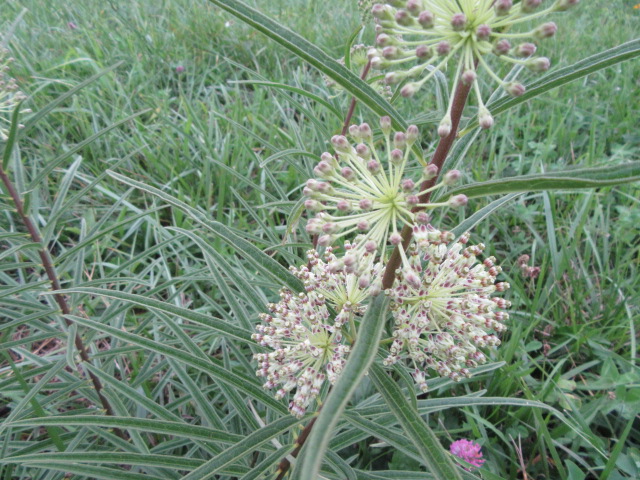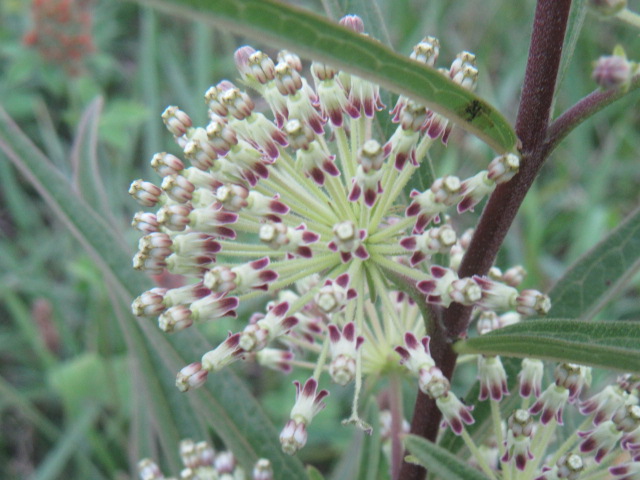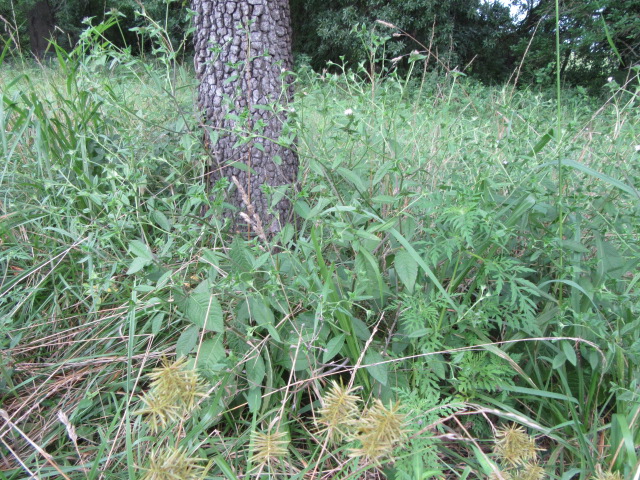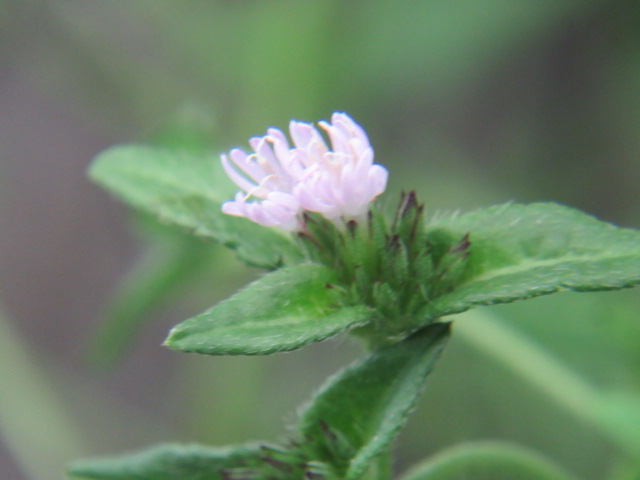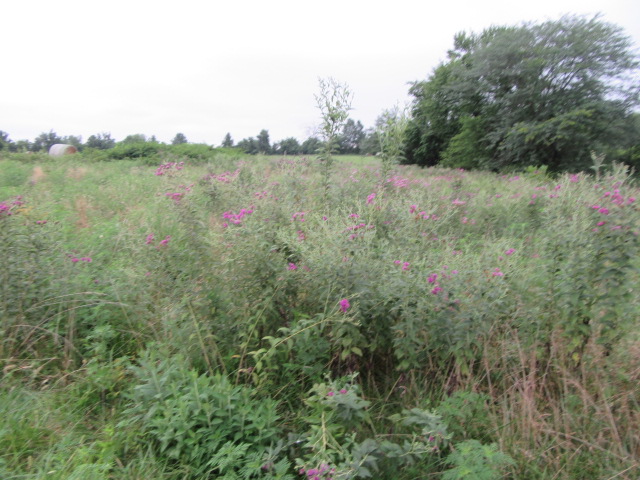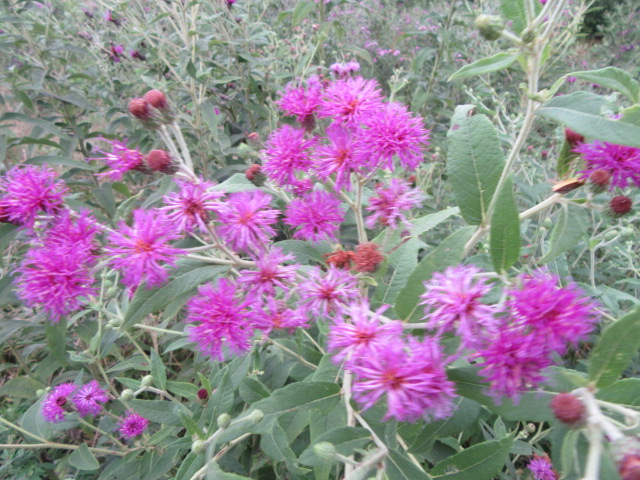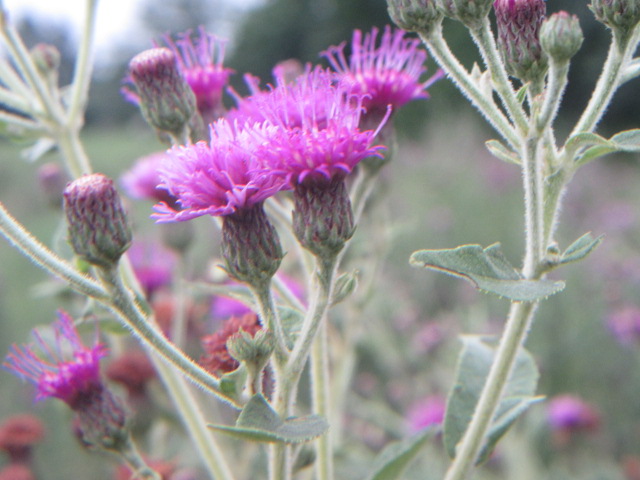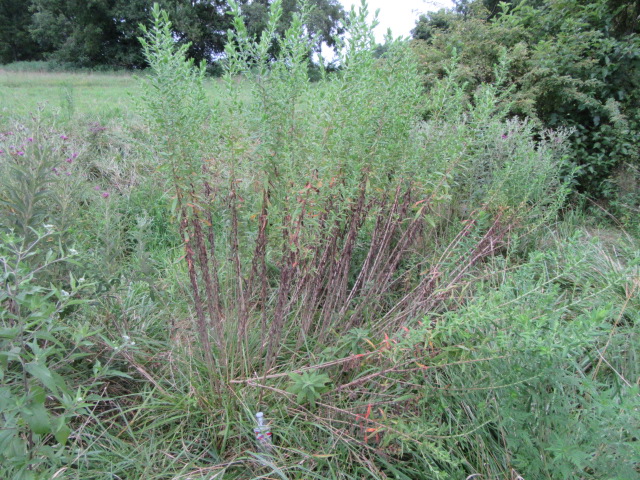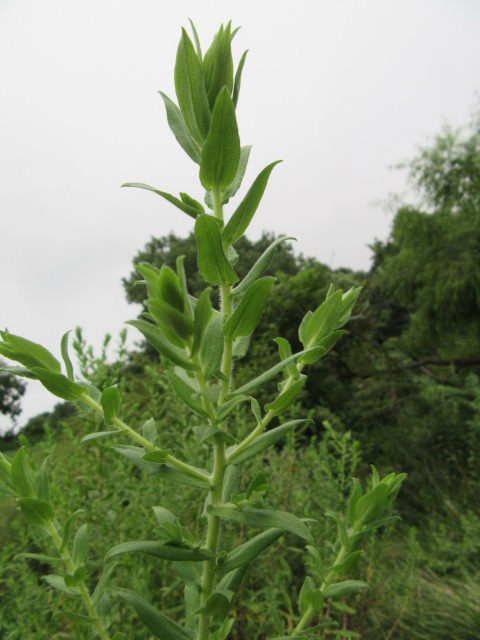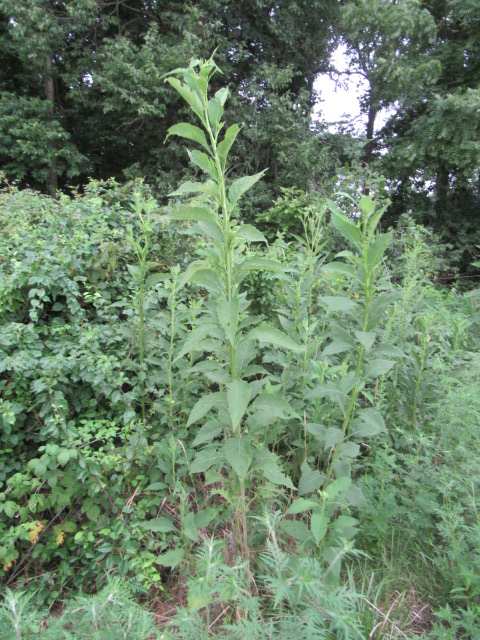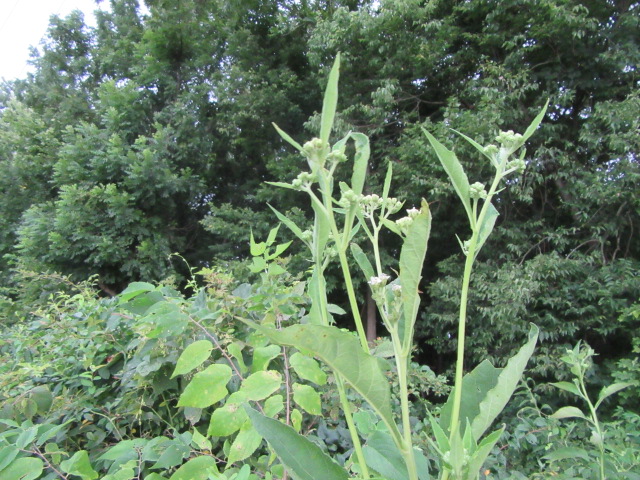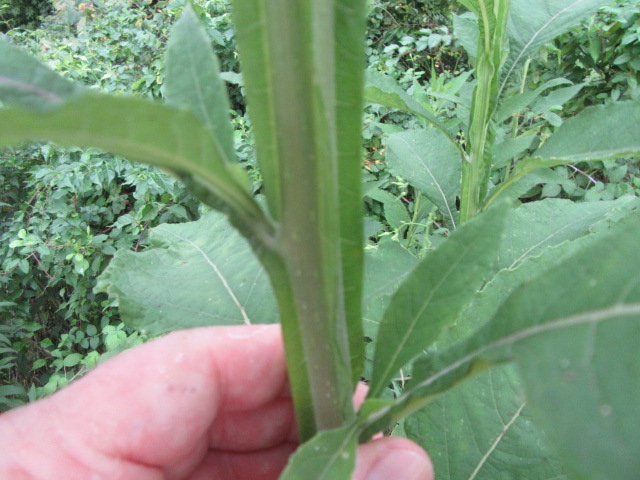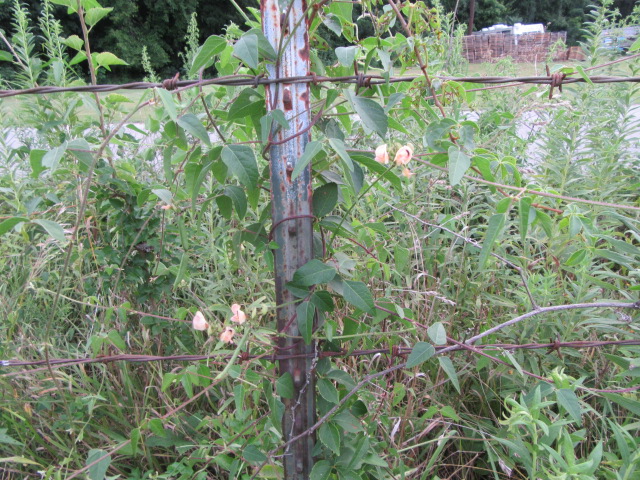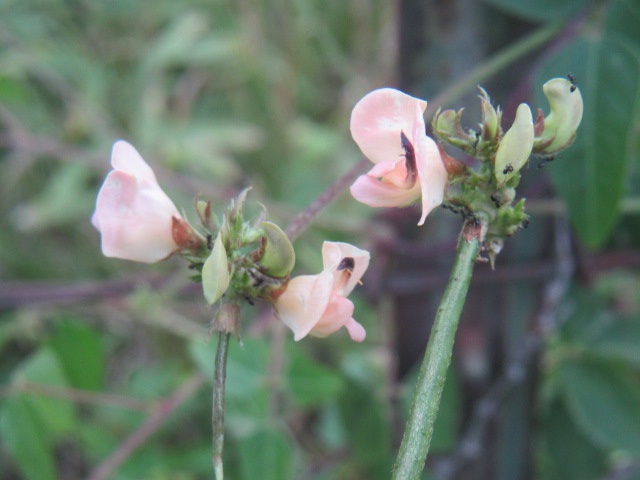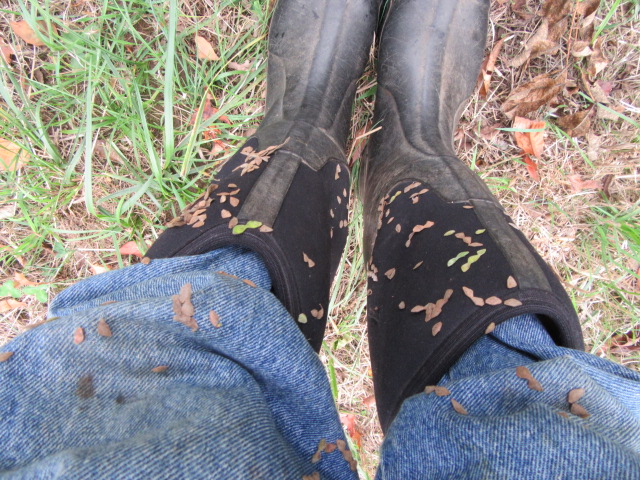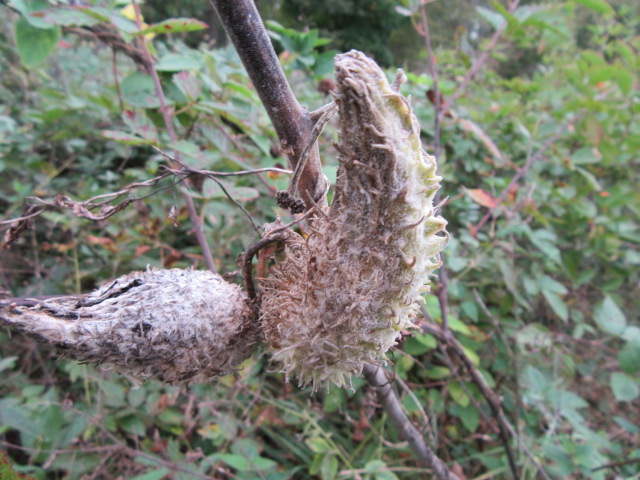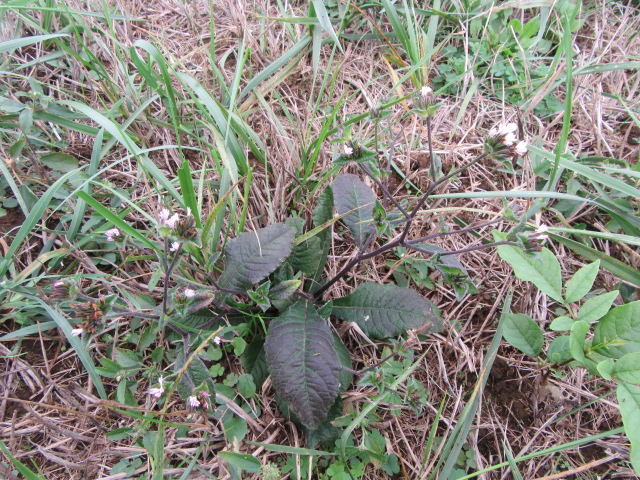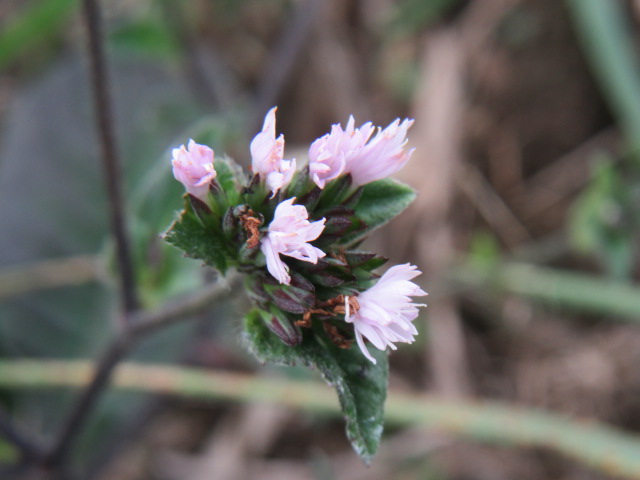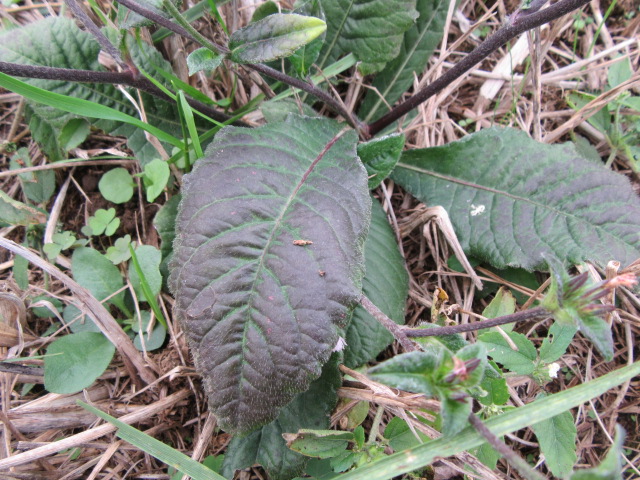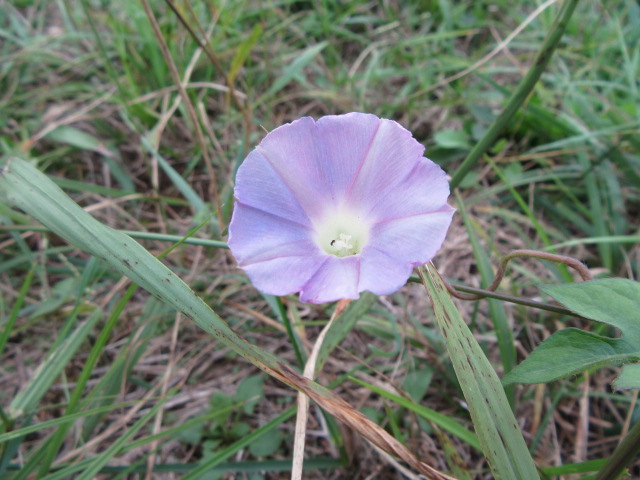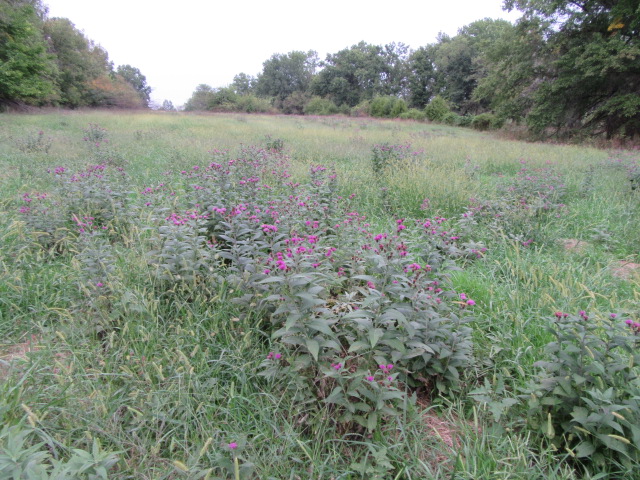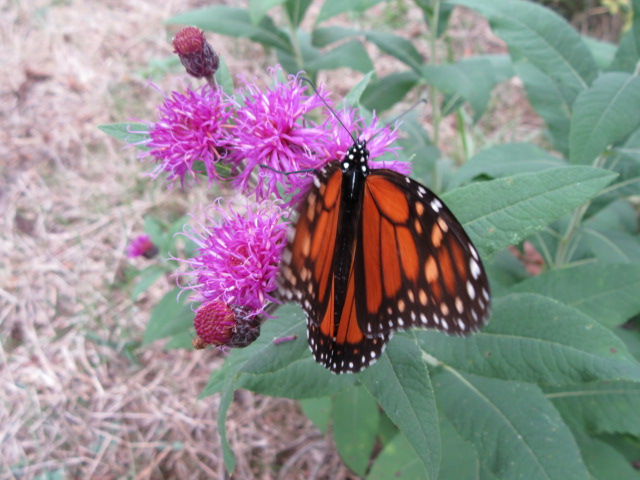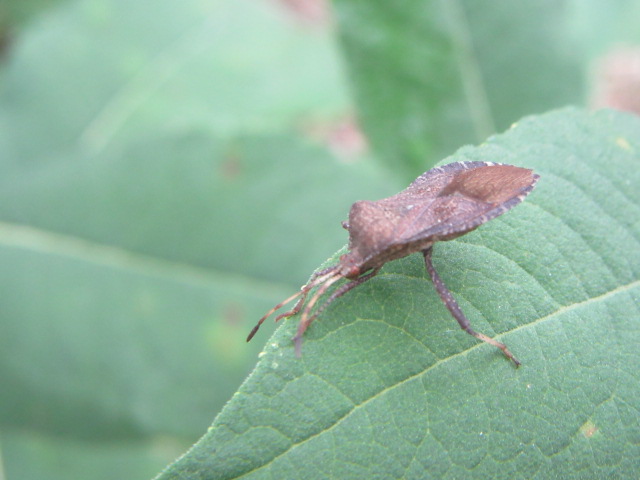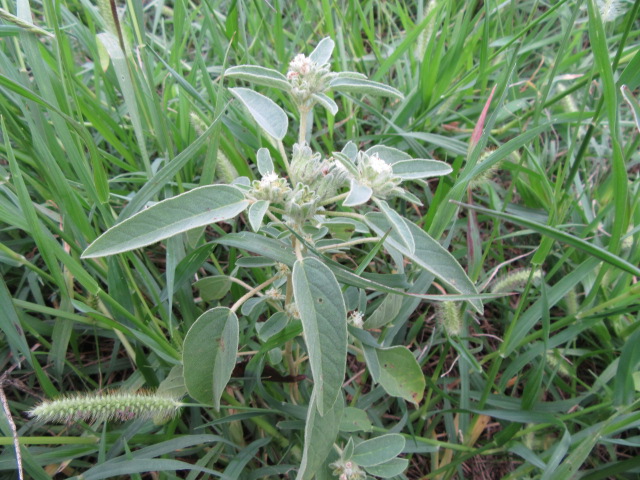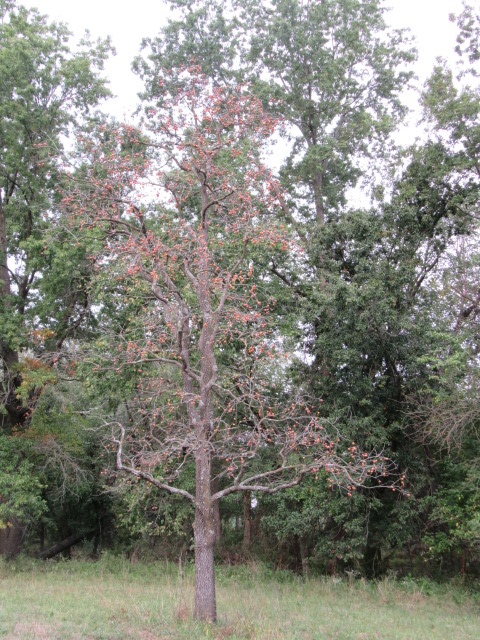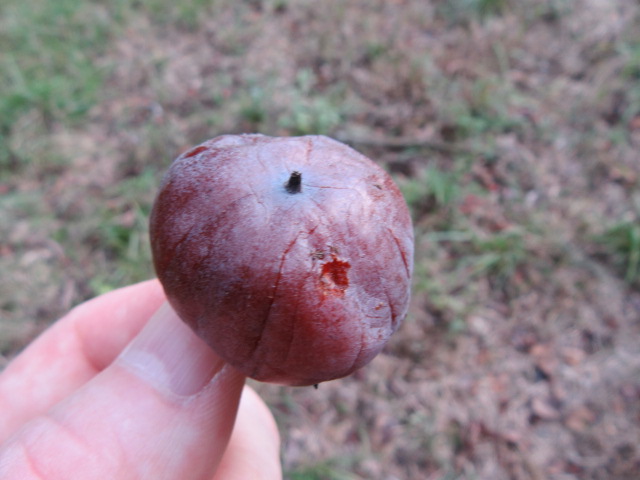
Elephantopus carolinianus (Elephant’s Foot) on 9-9-19.
Hello everyone! I hope this post finds you well. I was helping a friend move cattle from his mother’s farm a few days ago and stumbled across this interesting plant. I helped him move a 1964 Ford Pickup from a hill that had been in the trees for 15 years a couple of days earlier. That was interesting. I didn’t take the camera at the time but I wish I had because seeing the old pickup in the trees and what we went through to get off the hill and up the road to the house would have made an interesting post. His mother sold her farm so we had to get everything moved.

Perilla frutescens (Beefsteak Plant) on 9-9-19.
Now, you have to visualize a shady hillside with a creek running along the side. The hillside is covered in trees with literally THOUSANDS of Perilla frutescens (Beefsteak Plant). While I was waiting for my friend (Jay) and another helper (Jay Wagler, Ruth Wagler’s son from Wagler’s Greenhouse), to drive the cows up from somewhere, I waited on the hill. Of course, I had my camera that day so I took several photos of the Perilla frutescens.

Perilla frutescens (Beefsteak Plant) flowers on 9-9-19.
I thought it was very interesting how the Perilla frutescens there were in full bloom when the plants behind my back pond were just budding.
After a while, the cows came so I had to forget about taking photos. I had to go up the hill from where I was then run down the hill as fast as I could, through all the Perilla, trees, vines, etc. toward the creek, then across the creek so the cows couldn’t go back to where they had come from. While I was running toward the creek, I almost tripped more than a few times. Anyway, as I was running I wasn’t really paying attention to where I was going because I was looking at the plants. I spotted a plant I had never seen before but I didn’t have time to stop… By the time I made it to the creek, the cows were heading that direction. They crossed the creek and so did I.
Now, if you have ever driven cattle through a forest that have no idea why they are being herded in the first place, you will know they aren’t just casually walking. Some of them are calm and in no hurry while most of them have their ears up and are running full speed ahead. The calves were going in circles because they had no clue. Mama cows would run ahead then realize their kid wasn’t with them, so they would turn around. And, of course, there were always a few that just stand way behind the others that think they can get left behind. They try to sneak off while you are trying to get the runners to go where you want them and not where they want to go, which is back to where they were in the first place. The opening we needed them to go through was plain as day and right in front of them. What did they do? They stood there looking at the opening. The opening in the fence was to the pasture where the barn was… Ummm… Where the corral was. Now, if you are a cow that is used to a daily routine you would be wondering why you are being herded to the barn in the morning instead of being called to eat feed later in the afternoon. You would be thinking something is fishy. After a while, a few started toward me. Then the rest followed. As I waved at them they found another opening in the fence so they could circle around to the other opening to try and get away. Well, that didn’t work and finally, they went to the barn.
There is a little more to what happened next, but we did finally get them in the coral. All but a cow named Fuzzy who escaped.
Once the cows were in the trailer, I walked back to the creek. I had to go back up the hill to get the tractor I had left there but the tractor wasn’t on my mind. I had to find that weird plant!

Elephantopus carolinianus (Elephant’s Foot) on 9-9-19.
I crossed the creek and started up the hill through all the vegetation. The hillside was nice and shady and I had to just stand for a minute to admire nature at its finest. There was so much life going on! The bugs were all busy feeding on flowers and each other, birds were flying around, butterflies flying from one flower to another. I found the plant I was looking for with no problem because there were a lot of them along the bottom of the hillside. It was sure a strange plant and I had never seen any quite like it. That evening I identified the plant as Elephantopus carolinianus (el-eh-fun-TOE-pus kair-oh-lin-ee-AN-us). Common names include Elephant’s Foot, Carolina Elephant’s Foot, and Leafy Elephant’s Foot.

Elephantopus carolinianus (Elephant’s Foot) on 9-9-13.
Reading the description of this plant on the Missouri Plants website can be pretty complicated.
Inflorescence – Capitate cluster (glomerule) of flower heads terminating stems. Peduncles to +10cm, antrorse appressed pubescent. Peduncles subtended by a single foliaceous bract. Flower clusters subtended by typically three foliaceous bracts to +/-4cm long. Bracts with antrorse appressed pubescence.
I think that means the stem ends in a cluster of flower heads that are compact or unusually compressed. Close to the top of the stem is a leaf with another 3 1/2-4″ of stem above it. Then there are 3 leaves (foliaceous bracts) which the flower clusters sit on. Bracts and peduncles have short hairs.
Involucre – Phyllaries loose, to -1cm long, 2mm broad, acute, green in upper 1/2, scarious below.
GEEZ! An involucre is a bract (phyllary) or set of bracts (phyllaries) that surround a flower or cluster of flowers. In this case, I believe there is something a little strange going on… Skip down to the photo after the next one…

Elephantopus carolinianus (Elephant’s Foot) on 9-9-19.
The flowers are rather strange. Although this plant is a member of the Asteraceae (composite) family, the flowers are not “daisy-like”. They only have disc flowers.
“Disk flowers – Corolla lilac to whitish, irregularly 5-lobed. Corolla tube 5mm long, glabrous. Lobes to 5mm long, linear, glabrous. Stamens 5, adnate at base of corolla tube. Anthers connate around style, 2mm long, exserted. Style included. Achene (in flower) white, pubescent, 2mm long. Pappus of 5 bristles. Bristles to 5mm long, slightly flattened and expanded at base.”
Hmmm………………………………………. Something seems a bit odd.

Elephantopus carolinianus (Elephant’s Foot) on 9-9-13.
Some of the plants have lavender-pink flowers. The above photo is somewhat easier to explain… The flower emerges from the phyllaries… WAIT A MINUTE! Take a closer look at that mass of petals… Something is weird! I think I need to jump the fence and have a closer look. How many flowers do you see? One? Count again… I see at least four.
So, using the above descriptions, each bract has a set of four loose phyllaries (actually 2 pairs of 2) in which 4-5 flowers emerge from. Have you ever seen a Fan Flower (Scaevola sp.) where the petals are on only on half the flower? I think that’s what is going on here…
It would have been better to have read the descriptions then searched for this plant so you will know what to look for. For sure you would have known what this plant is when you see it because there is none even similar.

Elephantopus carolinianus (Elephant’s Foot) on 9-9-13.
Lower leaves are quite large and “spatula-like”. One website says these lower leaves are 5″ long, but just guessing, I would say they are closer to at least 8″.
Missouri Plants says: “Alternate, sessile, elliptic to oblanceolate or spatulate, acute to acuminate, shallow serrate to crenate-serrate, slightly scabrous and pubescent below, sparse pubescent and shiny dark green above, to -30cm long, -10cm broad, tapering to base.” That is about 11″ long by about 4″ wide and the leaves attach directly to the stem with no petiole (sessile).

Elephantopus carolinianus (Elephant’s Foot) on 9-9-13.
The plant’s upper leaves are MUCH smaller and kind of oval in shape. Here you can see this leaf is what is meant when Missouri Plants says: “Peduncles subtended by a single foliaceous bract.” This leaf is where the “inflorescence” begins and is part of it as the “single foliaceous bract.” At least that is my opinion. Subtended means “under” so it makes sense.

Elephantopus carolinianus (Elephant’s Foot) on 9-9-13.
Besides a camera, I also need to remember to take the magnifying glass, a small note pad and pen… A field guide would also be promising. I haven’t normally been one to bring plants home from other locations, but I am really tempted with this one. I saw this plant again while I was helping Jay at either his farm or in the back yard of his mothers (the one she sold). Apparently this plant is fairly common in that neck of the woods. I think I may need to check the creek behind here even though I don’t own that property. I normally only go there in the spring to hunt morels. No one will ever know… 🙂

Elephantopus carolinianus (Elephant’s Foot) on 9-9-13.
I think I read somewhere that the bracts contain a single seed that doesn’t fall out. The whole bract falls off with the seed still inside.

Map from USDA Plant Database showing where Elephantopus carolinianus is native.
Plants of the World Online by Kew lists 23 species of Elephantopsis. Four are native to the United States including E. carolinianus, E. elatus, E. nudatus, and E. tomentosus. E. carolinianus most abundant from Kansas down to Texas and eastward to Pennsylvania and down to Florida and has been Introduced to Cuba. Most species are native to several countries in South America and several in a few countries in Africa.
The cows were loaded into a trailer in the afternoon and taken to another pasture. As far as I know, Fuzzy is still at large.
I have been working on the post about the Persicaria species (Smartweeds) here and ran into a snag. Two species are very much alike and one is variable. One has longer leaves than the other and both have the same identifying features. I think many colonies could have both species which makes it complicated. I was measuring leaves in a very large colony and a few plants have 6″ long leaves while most are 3 1/2 to 4″. The rest of the species were fairly easy to identify. I am going to check out Steyermark’s Flora of Missouri on Monday at the library to see if they can help. The original was written by Julian Steyermark was published in 1963. In 1987, the Missouri Botanical Garden and the Missouri Department of Conservation decided to work together and revise and update the older book in a three-volume set. The first edition, written by Mr. Steyermark was published in 1999 and it is available at the local branch. Volume two was published in 2006 and volume 3 in 2013. Volume 2 and three were written by George Yatskievych. They are at another branch but can be delivered here or I can drive 18 miles to pick them up. Each volume has over 1,000 pages. The post is ready, but I need to make sure about the one (or two) species.
Until next time, be safe and stay positive. Be thankful and observant. Never know what you may will run across.
